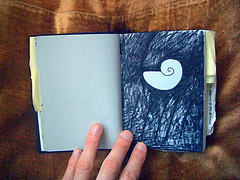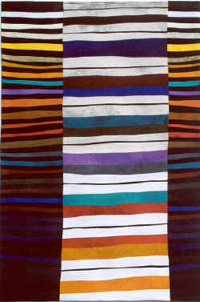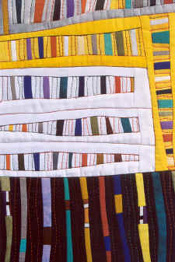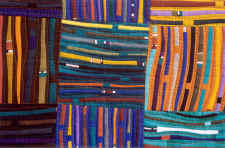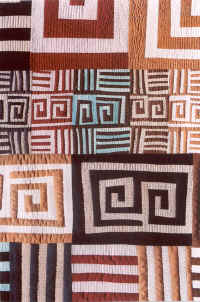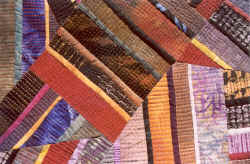I posted this 2.5 years ago. I am pleased how much learn, or relearn, from reading what I wrote then. Since I am not posting much new here, I thought you also might enjoy reading, or perhaps rereading, what I wrote back then. I hope to be back writing regularly here again soon.

This evening I meditated for the first time in awhile. I sat for over an hour in a chilly, dimly lit upstairs room, facing a north window, staring mostly at a desk I hardly use anymore. (especially since I set up this computer facing south in a different room on the first floor) I’m not sure why I meditated now or why I hadn’t for many months. I think I needed to reconcile the distance I feel from blogging, from words, thoughts, ideas. I needed to just experience, clean out.
Years ago I found a source of power in the detachment I learned from focused meditation. (I’m talking 15 years ago.) Detachment freed my fears, allowed me to breathe new air, new life and ideas. I felt free to grow and learn, to improve. Then I began to cling to that feeling, that essence of detachment. I began to mythologize it. And its power quickly faded. I wondered and searched for why it faded. I didn’t have a regular practice and soon “gave up”. (I don’t have a regular practice in anything, except irregularity.)
Sitting tonight, I tumbled with thoughts as I settled my posture to relieve the discomfort it caused. I tried to slow my breathing, which tends to become over excited and then I hyperventilate. I tried to calm my mind. Calming the mind is like trying to calm a restless sea. Doing less is better. So I just let. And let.
And let. The desk before me occasionally revealed itself directly in the swirl of words and images, the monkey mind flitting as a moth in the garden on a summer night. The desk’s wooden structure is as simple, platonic as it gets. Square angles, average proportions, no frills. Utilitarian. Probably oak, or some other hardwood, I’m guessing it was made in the forties of fifties, judging by the deco-ish drawer handles.
The three drawers at the right of a cubby hole for the user’s chair have been stained blackish, perhaps from thousands of touches by human hands. What of the lives of those hands? What of their fate? Did doubt tremble in some? Did sex film those fingers? Chocolate cake? Perhaps this desk was used in a factory office, where soot or other noxious particles permeated the building. Perhaps the lungs which breathed while sitting nearby have expired. Unknown, these possible histories flex in my imagination. What of the forests from which the wood came, each individual tree? And on. All this noticing happens in a second.
I shift my focus to the objects on the desk, which tell tales of my own recent history; a Japanese handmade paper candle shade, decorated with dried flowers within the fibers of the paper. It was given to me by a friend years ago. So simple and timeless and fragile. I consider its value, which soaks beyond its paper structure. Nearby sits is a small ceramic pot to burn fragrant oils. Functional, round, glazed white, it heats a few drops of oil by a candle placed below. Both remind me of past habits, now faded, to practice yoga and meditate here by candle light and (often lung-clogging) oil scented air. A tiny pocket notebook lies open, unused for months now, where ideas for poems or posts were noted. Other objects litter the desktop, adding to its history heap.
This bit of noticing brought me some clarity.
When I notice the ephemeral state of any thought or life, none of this matters. The pain and cold in my body are only temporary. Is any level of pain unbearable when considered against nothingness? Such awareness frees ties to the frail body. I can see so many choices, so many words, so many possible lives fanning out from here. Each choice excludes millions, and creates others. Yet just one is me just sitting. So I sit… and sit. I notice. I am older.
Long ago I read Sartre’s “Nausea” and was profoundly affected by it’s cynical, existential tone. I often feel the nausea of not knowing who I am, not really knowing, only placing meaning, choosing from the emptiness. Nothing matters in the long run. It’s all relative to the vast space and time we are so good at ignoring. I don’t behave so cynically, but inside, I still feel it’s all just illusions, temporary patterns. So I choose to live the illusions, the subjective experience in general, of beauty, happiness, food, love, sex, trust, music, family, friends. These are what I rely on to compose and anchor my detachment. Otherwise I would just float away.
This sitting session helped me. Detachment is powerful. Frightening. Enticing. A burden and a gift. I am responsible for how I live.
I have work to do. I have goodness to share. I matter. I know. It’s all good if I breathe in synchronicity with the heartbeats around me.
The photo above is part of an Amish “double wedding ring” pattern quilt, from OH, 1930s. The interwoven circles could symbolize the inter-relatedness of all life on this fragile sphere.

